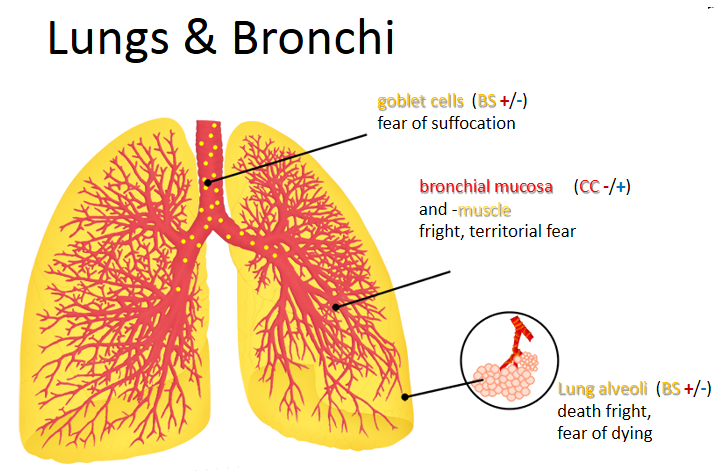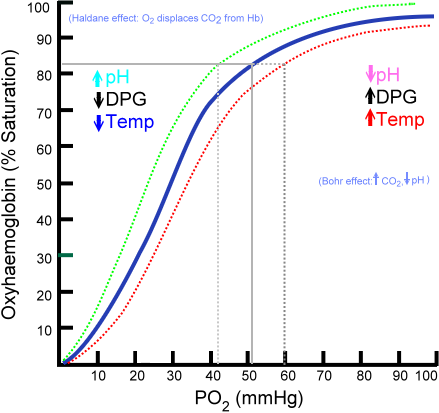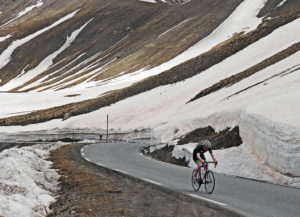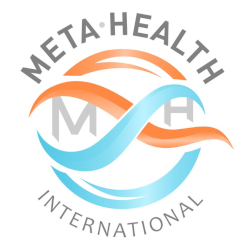
CO2 has gotten a bad reputation these days. We tend to forget that this gas has vital functions for survival – both for the individual organism, the ecosystem, and the earth. In this article I want to focus on human beings, a widespread stress response, and its connection to some typical dis-ease patterns that science is yet attempting to decode.
Everyone knows that we breathe to get oxygen into our system, which is needed to burn glucose from our food to create the energy needed for our life functions. Oxygen from the air is taken up into our blood, tied to hemoglobin in the red blood cells which thereby change their colour from bluish to bright red. This gas exchange is taking place in the alveoli, which look like small vines at the end of the respiratory tree. The oxygenated blood is then transported via arteries and capillaries into the tissues, where the mitochondria in each cell create ATP as energy source for our muscles to work.

As you see, these little organelles react guided by the brain stem, and are incredibly versatile in terms of their function: normally, only a minor part of the alveoli are active and streamed with blood. During exertion like sports, laughter, or high fever, “reserve” alveoli are activated in order to adapt their function to the demand placed upon them. 1
According to Dr Hamer’s findings, the same mechanism is triggered in case of a death fright or fear of dying. When this panic is not resolved, the alveoli tend to expand their mass through proliferation in order to help to resolve the situation that leads to that fear. Have you ever been held under water long enough to feel you were unable to breathe? Then you know how this fear and panic feels. And know why “waterboarding” is such an ‘effective’ form of torture. 2
You know how dramatic that urge to gasp for air feels!
Stressed breathing
Gasping for air is a common reaction even when we feel other kinds of stress. Hyperventilation is a typical response to emotions such as fear or anger – it is assumed that 95% of cases are caused by our psyche. 3
On the other hand, studies find that the minute ventilation rate is increased in many chronic health issues such as COPD, heart disease, cancer, asthma, cystic fibrosis and diabetes. 4
Clearly, the reason is not lack of airflow to the lungs here. What is it?
We need to look at other factors that influence the uptake, transport and release of oxygen in the tissue. When we hyperventilate – think of a real fight-or-flight incident, the logical sympathetic response to threat – our blood temporarily thickens to prevent blood loss caused by the wounds we will sustain in the fight. Thus, hyperventilation has been used as therapy, e.g. to decrease intercranial blood pressure after brain surgery 5. However, the heart must work harder, and thick blood still can’t reach the cells supplied by the smallest capillaries!
What biochemistry tells us
There is a way to resolve this mechanism, and it’s based on CO2. Those of us who attended a First-Aid training already know: breathe into a paper bag, and the funny tingling sensations and the muscle catalepsy that come with accelerated breathing will disappear. When we inhale less oxygen and more carbon dioxide, we calm down again.
Carbon dioxide in fact is a vasodilator: it widens the blood vessels. With wider blood vessels, more blood gets through and more oxygen can reach the tissues. And there is another component which refers to the mysterious Bohr effect 6: because CO2 causes the oxygen to bind less tightly to haemoglobin in the blood cells, its release to the tissues is facilitated! This is depicted in the oxygen dissociation curve 7

CO2 enables the cells to receive oxygen.
Let’s summarize: When a desperate organ reaction happens upon a UDIN trauma causing a death fright, this may result in unhealthy growth of lung tissues because this strategy is suitable only for short periods. It later leads to overexertion of the heart and to aggravation of supply in the tissue. Alveolar hyperventilation gives rise to free radicals aka “oxidative stress”, acidifies the body fluids and inhibits the regenerative (immune) system. 8, 9
If only the alveoli knew that there is another way!
The oxygen advantage
This is the promising title of a book by Patrick McKeown 10, explaining and illustrating the breathing method explored by doctor Konstantin Pavlovich Buteyko.

It’s actually a resilience training for your alveoli: by strictly nose-breathing and using your diaphragm more than your chest muscles, you learn to make soft breathing your new habit. Athletes often train in high altitudes to adapt to lower concentration of oxygen, which gives them the extra stamina to excel in competition. We, too, can train our body to tolerate some “air hunger” and to function well with less need to inhale: this means quality over quantity!
The method is very simple:
- Notice how you breathe, and where you feel most expansion.
- Notice how long you can hold your breath after exhaling, before you feel the first sign that you want to inhale (you can take the time and compare it before and after breath training)
- Inhale only through your nose, not through your mouth.
- Try to breathe so softly that it can’t be seen!
- Train breath-holds while you walk or exercise, and avoid gasping for air.
- ebook *
This will get easier and easier as you go. This method is also proven to help with congested nose, asthma, COPD, and many unhealthy states related to ‘oxidative stress’.
At the same time, Buteyko breathing stimulates the Vagus nerve and supports calm and regeneration. I find it a good complement to the Wim Hof Method which makes deliberate use of the sympathetic, energized state, and which also aims at increasing resilience!
With these breathing techniques, we have effective tools to support our work with clearing fears and traumatic incidents that impact our happiness and our health.
A case example
A woman, sensitive and a shamanic healer herself, suffered from asthma as well as from digestive trouble since her youth. Interestingly from the META-perspective, she had also been diagnosed with a mild form of autism when she was a child, which hints at a constellation with themes of territorial anger and speechlessness at play. Even though she had already done a lot of work on her anger and rage related to her position within the family and acknowledgement by them, the emotions could still be triggered. Besides, her bronchi were very sensitive to temperature change, dust and any “unclean air”.
Finding both strength and calming effect in the breathing technique the next time she was overcome by rage, she was able to completely transform her attitude. The combination of emotional release, insight and physical control was a total relief for her and provided an a-ha moment.
When she is motivated to make this experience a new habit, it will change not only her asthma but also her immune system and the microbiome in her gut, resolving her indigestion.
It’s amazing once we understand the ways how our bodymind works, to be able to use bio-logical signals to resolve ingrained patterns!
More interesting reads

|
The Oxygen AdvantageBy Patrick McKeown. Available as: |

|
Asthma-Free NaturallyBy Patrick McKeown. Available as: |

|
Anxiety FreeBy Patrick McKeown. Available as: |

|
Buteyko Clinic MethodBy Patrick McKeown. Available as: |
* Our cooperation partner for book orders is Thalia.de – with a network of 246 branches all over Germany and an Europe-wide online sale. We receive a small commission on sales from our website, helping us to cover our operating costs so that we can provide informative articles like this for free. For you as customer the price remains the same, of course. Thank you for supporting us!
References:
[1] https://flexikon.doccheck.com/en/Alveolus
[2] https://en.wikipedia.org/wiki/Waterboarding
[3] https://www.angst-panik-hilfe.de/hyperventilieren-hyperventilation.html
[4] https://www.normalbreathing.org/causes-of-hyperventilation/
[5] https://www.frontiersin.org/articles/10.3389/fneur.2017.00250/full
[6] http://www.pathwaymedicine.org/bohr-effect
[7] https://en.wikipedia.org/wiki/Oxygen%E2%80%93hemoglobin_dissociation_curve
[8] https://en.wikipedia.org/wiki/Oxidative_stress
[9] https://greek.doctor/pathophysiology-1/45-acute-and-chronic-alveolar-hyperventilation/
[10] https://oxygenadvantage.com/
Pictures:
User hpgruesen via Pixabay [Pixabay license]
META-Health International CIC
User Ratznium via Wikimedia Commons [public domain]
User ejaugsburg via Pixabay [Pixabay license]
 META-Healthy Life articles are created by professionals and friends of META-Health International CIC, supporting individual and global health by deepening and sharing our understanding of how resilience and well-being are achieved.
META-Healthy Life articles are created by professionals and friends of META-Health International CIC, supporting individual and global health by deepening and sharing our understanding of how resilience and well-being are achieved.